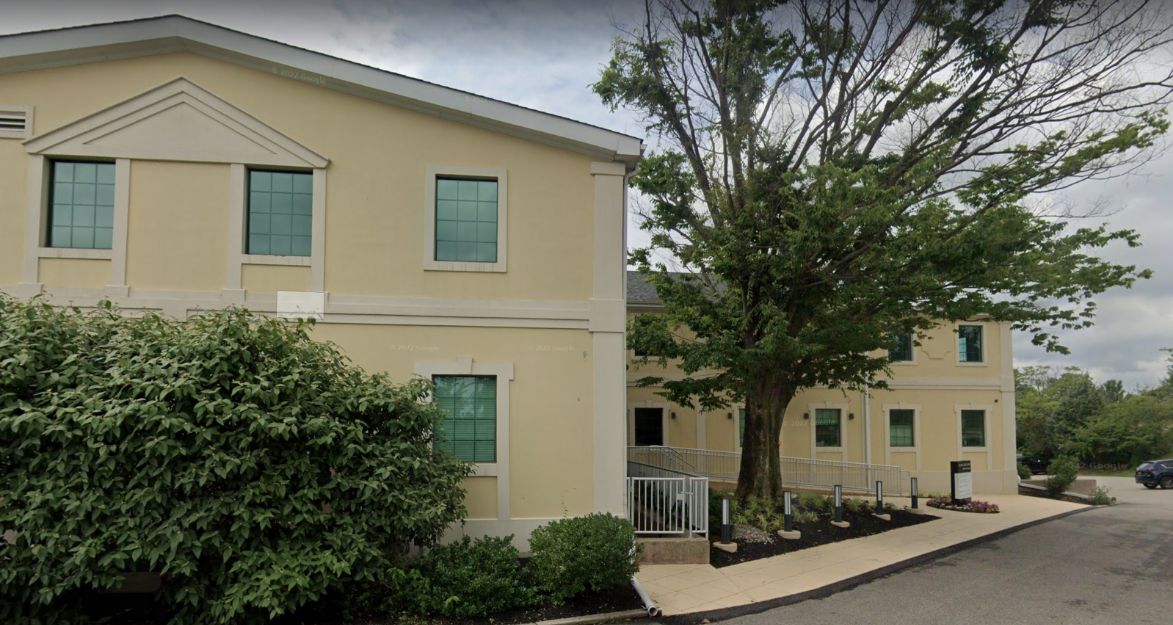Basal Cell Carcinoma
Comprehensive Care for Basal Cell Carcinoma (BCC) at Keystone Dermatology Partners
Basal cell carcinoma (BCC) is the most prevalent form of skin cancer, representing the majority of diagnosed skin cancer cases. It begins in the basal cells found in the deepest layer of the epidermis. Although BCC usually grows slowly and is not highly aggressive, it can lead to significant local tissue damage if not addressed promptly.
BCC can appear as red patches, pink growths, open sores, or shiny bumps on the skin, most often resulting from excessive exposure to ultraviolet (UV) rays. With proper treatment, BCC is rarely life-threatening.
Approximately three million people are diagnosed with BCC each year, predominantly those with high UV exposure. While cases are increasingly seen in younger people, BCC is still most common in individuals over 40. Those with fair skin, blond or red hair, and light-colored eyes are more at risk, as are men.
Why Choose Keystone Dermatology Partners for Basal Cell Carcinoma Treatment?
At Keystone Dermatology Partners, our skilled dermatologists specialize in the diagnosis and treatment of Basal Cell Carcinoma. We employ the latest advancements, including Mohs surgery, to achieve the best possible patient outcomes. Early detection and intervention are key to preventing complications and ensuring a swift recovery.
If you have concerns about Basal Cell Carcinoma, book a total body skin exam online with one of our trusted experts at Keystone Dermatology Partners. We are committed to providing comprehensive care, prioritizing your skin's health and helping you maintain cancer-free skin. Your well-being is our priority, and we are here to support you throughout your journey to healthy skin.
Examples of Basal Cell Carcinoma
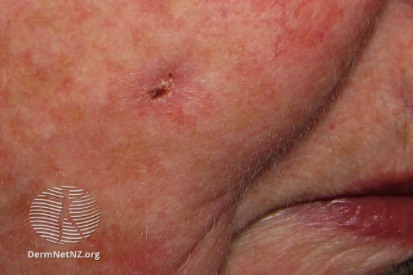
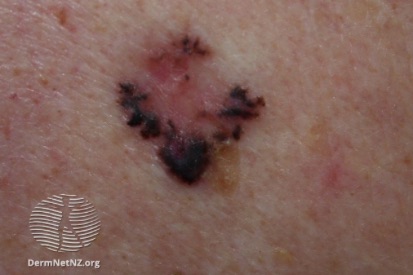
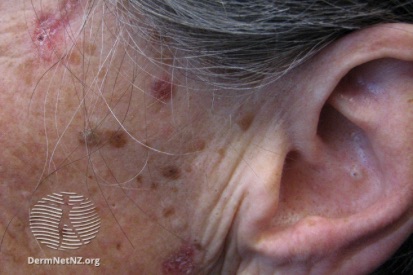
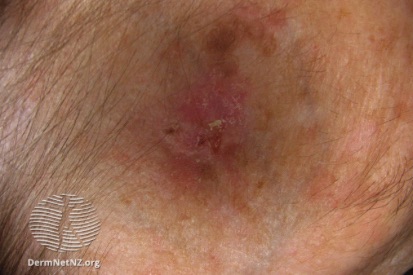
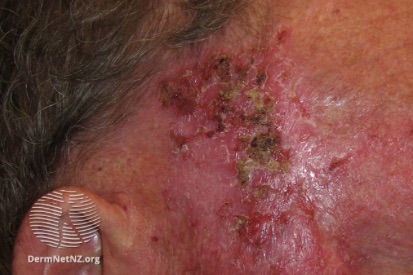
Symptoms of Basal Cell Carcinoma
- Basal cell carcinoma (BCC) often begins as persistent wounds or sores.
- BCC can appear as reddish areas on sun-exposed parts of the body such as the face, neck, arms, and legs.
- BCC might resemble scars, pink growths, or shiny bumps.
- In some cases, they bear a resemblance to moles, contributing to misidentification.
Causes of Basal Cell Carcinoma
- Basal cell carcinoma is caused by spending too much time in the sun.
- Getting sunburnt, especially as a child, increases the risk of BCC.
- Family history of skin cancer.
- A weakened immune system, and exposure to certain environmental toxins can also contribute.
How to Prevent Basal Cell Carcinoma
- Sunscreen is Your Shield: Regularly apply a broad-spectrum sunscreen with at least SPF 30 on all exposed skin, even on cloudy days. Reapply every two hours or more frequently if swimming or sweating.
- Cover Up: Wear protective clothing such as long-sleeved shirts, wide-brimmed hats, and sunglasses to minimize direct sun exposure.
- Avoid Peak Sun Hours: Limit outdoor activities during the sun's strongest hours, usually from 10 a.m. to 4 p.m. If possible, seek shade under trees or use an umbrella.
- Protective Gear for Outdoor Activities: If you're engaging in outdoor sports or activities, consider using sun-protective clothing and gear to create an extra barrier against UV rays.
- Regular Skin Checks: It's essential to schedule annual skin checks with your dermatologist. Early detection is critical to effective treatment plans.
Frequently Asked Questions: Basal Cell Carcinoma (BCC)
Individuals with fair skin, a history of frequent sun exposure, or a family history of skin cancer are at higher risk. However, anyone can develop BCC.
Dermatologists diagnose BCC by examining the skin lesion and might perform a biopsy to confirm the presence of cancerous cells.
Yes, Mohs micrographic surgery is an effective treatment option for Basal Cell Carcinoma (BCC). Mohs surgery is a specialized and precise technique primarily used to remove skin cancers, especially those in areas where preserving healthy tissue is critical, such as the face, ears, nose, and other cosmetically sensitive regions.
BCC can recur in the same area. Regular skin checks and follow-ups are crucial for early detection and treatment.
Continuing sun protection measures, regular self-examinations, and routine skin checks with a dermatologist are key to preventing recurrence.
From our QualDerm Family of Providers: Non-Melanoma Skin Cancers
How to Treat Basal Cell Carcinoma
- Mohs Micrographic Surgery: This specialized surgery is commonly used for skin cancers like Basal Cell Carcinoma, particularly in sensitive areas. Mohs surgery excels in preserving healthy tissue, boasting a high cure rate of around 98% for primary, non-recurrent cases.
- Excisional Surgery: In this procedure, a small margin of surrounding healthy tissue is removed to prevent the cancer from spreading.
- Electrodesiccation and Curettage: After numbing the area, the growth is scraped off and cauterized (burned) to eliminate remaining tumor cells and control bleeding. This method is not ideal for advanced cases or growths in sensitive areas.
- Topical Therapeutic Options: Certain creams or ointments can be considered for specific lesions. Your dermatologist will discuss these options based on the characteristics of the Basal Cell Carcinoma.
Featured Blogs

- Skin Cancer
- Skin Exams
With skin cancer cases rising year after year, it’s no surprise that people are itching to learn more about this life-threatening skin disease
Read More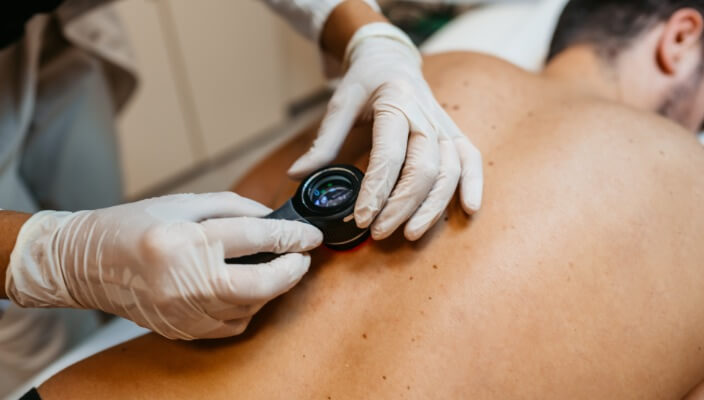
- Skin Cancer
- Skin Exams
In this blog, we’re covering what you need to know about five dangerous skin cancers, including basal cell carcinoma (BCC), squamous cell carcinoma (SCC), malignant melanoma, merkel cell carcinoma, and kaposi sarcoma.
Read More
- Skin Cancer
- General Dermatology
- Skin Exams
Navigating the landscape of Total Body Skin Exams: Uncover the comprehensive process, understand why it matters for skin health, and gain insights into what to expect during these essential dermatological examinations.
Read More

